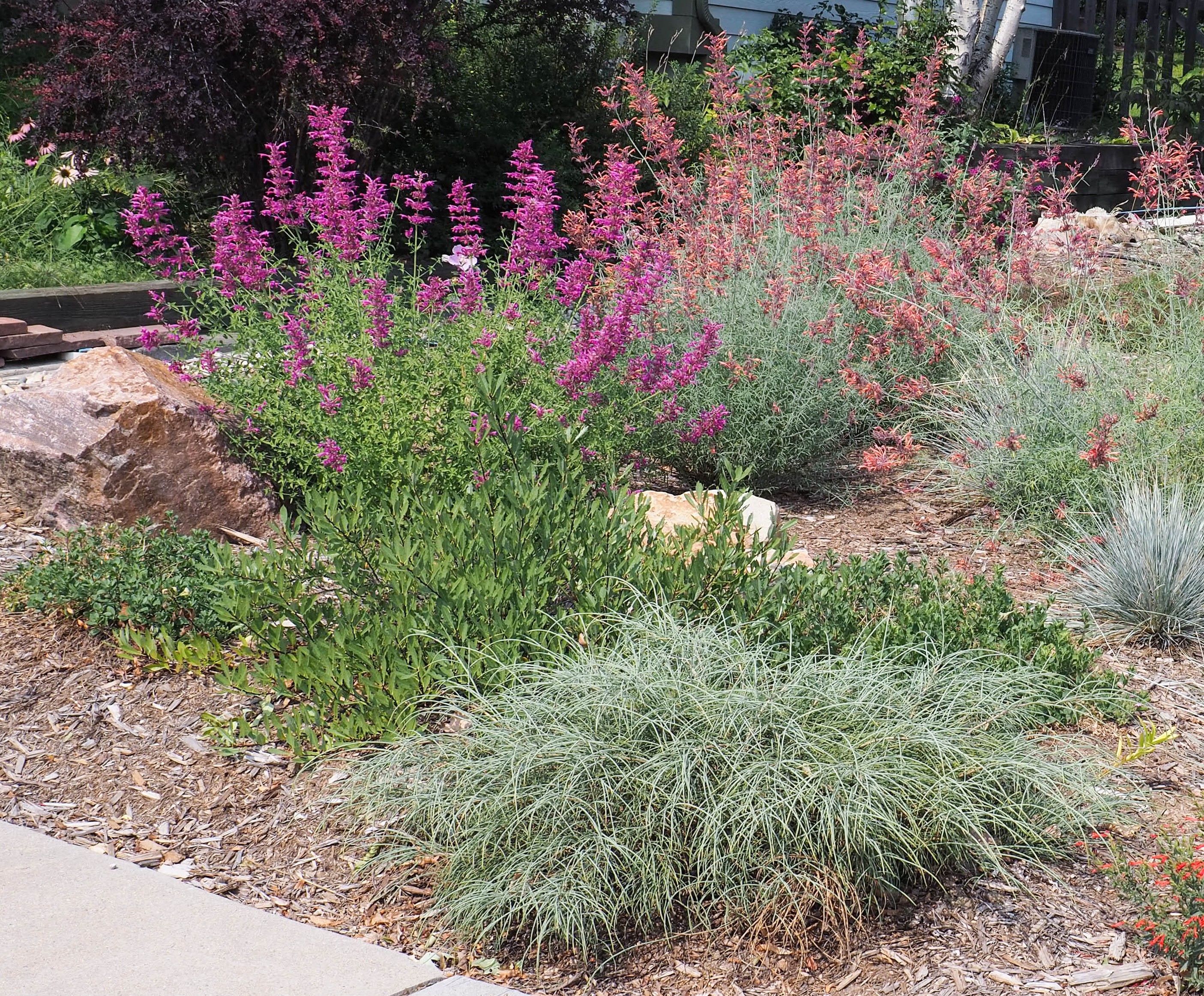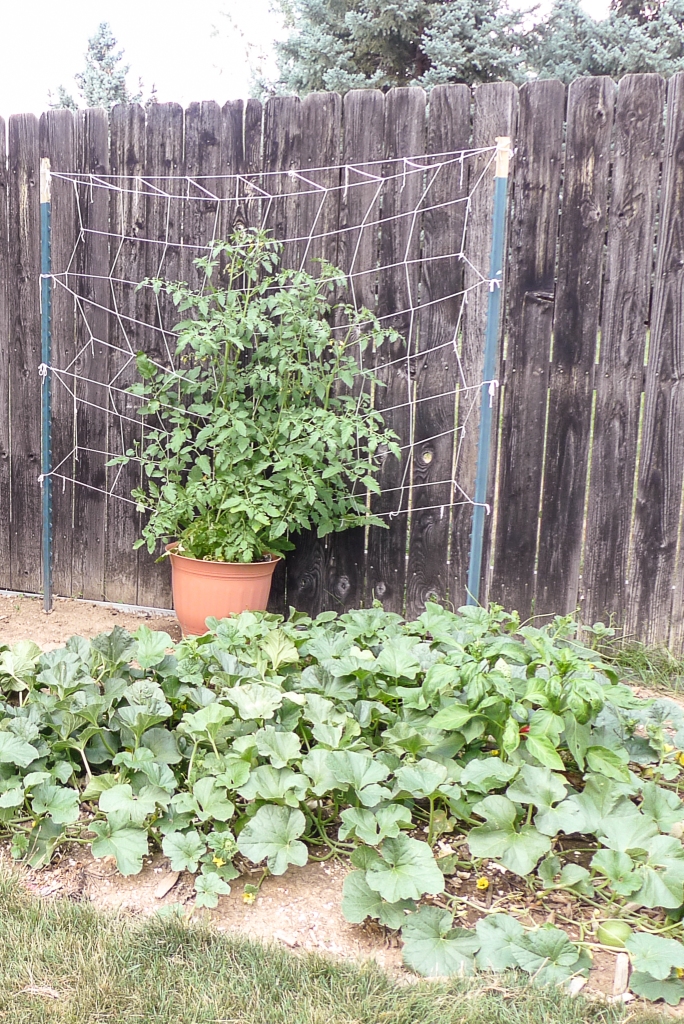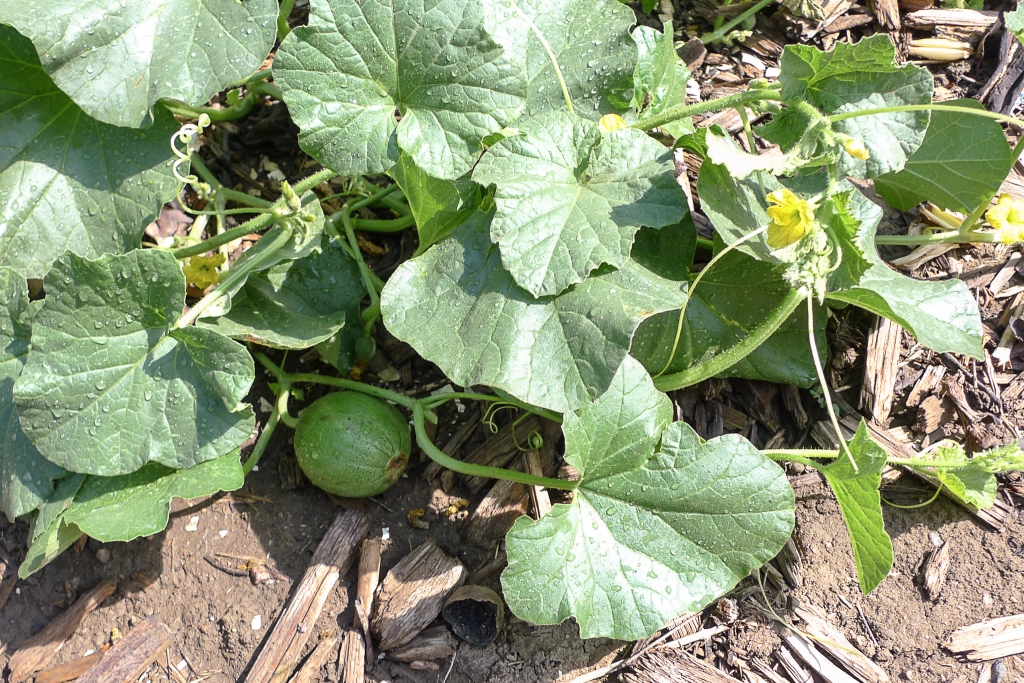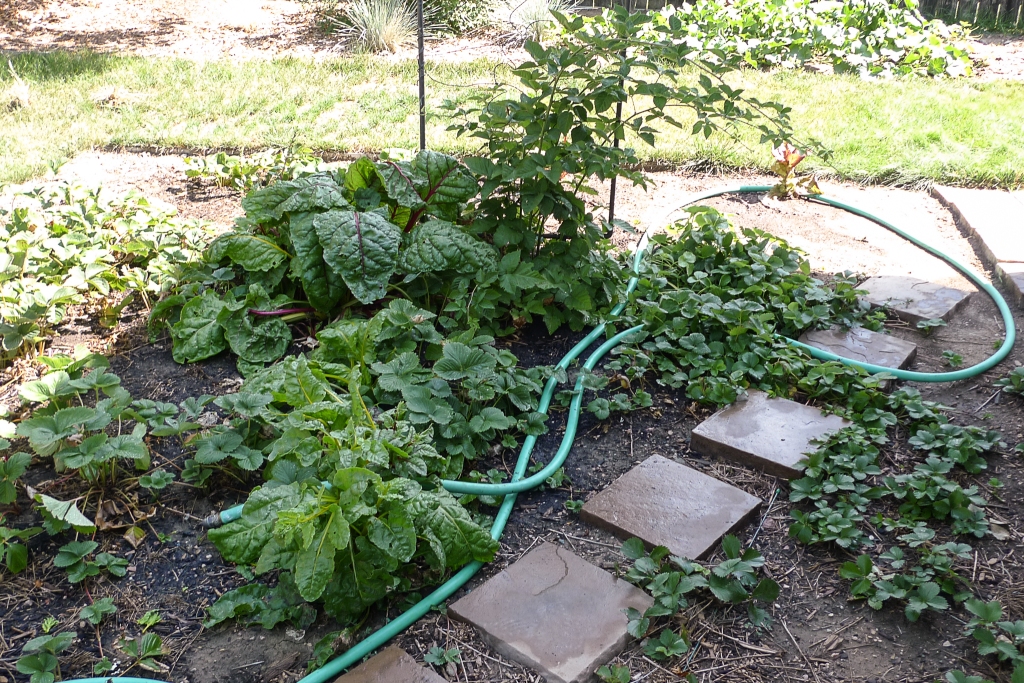
Bare root strawberries sit in a pot in my garage, where they wait until early April, when it’s warm enough to plant them outdoors.
Who doesn’t love strawberries? Those plump, juicy little chunks of goodness snatch our attention when we spot them in grocery stores.
Fortunately, strawberries are easy to grow in Colorado gardens. All you have to do is clear a patch of land and amend the soil with compost before plunking those babies into the ground.
The least expensive way to start a strawberry patch is to buy bare root strawberries online or at your local nursery. Early April is the best time to install bare root plants in gardens along Colorado’s Front Range.

I use golf tees to mark locations for the plants. Everbearing plants produce fewer runners than June-bearing plants, so I plant them 5 inches apart in rows that are 18 inches apart. Eventually, I’ll cut off the babies on runners and use them to expand my strawberry patch.
I buy my bare root plants in early March for the best selection. Then I soak them in water overnight before planting them in potting soil in a large pot, which I keep in the garage. I keep them moist, but am careful not to overwater them because I don’t want them to rot. Within a week or two, the plants start budding. Then in early April, I place them in the ground while they’re still semi-dormant. You can also simply buy bare root strawberries in April, soak them overnight, and plant them directly into the ground.
Another option is to go out and buy potted strawberry plants for planting in late May, but for the price of one or two potted plants, you can buy 10 bare root strawberries.

Before inserting a bare root strawberry into the ground, simply poke a slit into the soil with a garden trowel and then insert the plant, snugging the soil around it.
There are three basic classifications for strawberries: June-bearing, everbearing and day neutral. Although June-bearing plants produce the tastiest berries, their flowers can be damaged by late spring frosts, causing low yields. For that reason, ever-bearing plants tend to be a better choice for Colorado gardens because ever-bearers produce crops in both summer and fall. As for day-neutral varieties, they flower and fruit more consistently over the summer. Interestingly, though, I haven’t seen any day-neutral varieties in local nurseries, which makes me wonder if day-neutrals are as winter-hardy as June-bearing and ever-bearing plants.
Some recommended June-bearing varieties for Colorado include Honeoye, Guardian, Kent and Delite. I’ve grown Honeoye successfully, but haven’t tried the others. Preferred ever-bearing varieties include Ogallala, Fort Laramie and Ozark Beauty. I grew Ozark Beauty last year and am adding more, as well as Fort Laramie this year.
The literature I’ve read indicates that strawberries need full sun to grow best. I’ve found, however, that mine do quite well in part shade, given the intensity of Colorado’s sun.
When you plant bareroot strawberries in the ground, you may need to trim the roots back to about four inches. Be careful not to bury the crown or leave the roots exposed.
As for strawberry planting patterns and cultivation, the directions become rather wordy, so I’ll refer you to Colorado State University’s Strawberries for the Home Garden fact sheet and Cornell University’s Strawberries fact sheet.
Concerning mulching, I tried using straw mulch, as recommended. However, the straw produced so many weeds that I ended up donating the straw to a more weed-tolerant gardener and began using grass clippings instead. This year, I’ll try putting down a couple of layers of newspaper (no colored inks) and leftover packing paper, holding them down with rocks until I accumulate enough grass clippings to anchor the paper.
In addition to providing fruit, strawberries function well as a groundcover to help keep weeds out of your perennial beds.
If you start growing strawberries, you may enjoy them so much that you’ll decide to branch out into other berries, such as Chester dwarf blackberries.



















